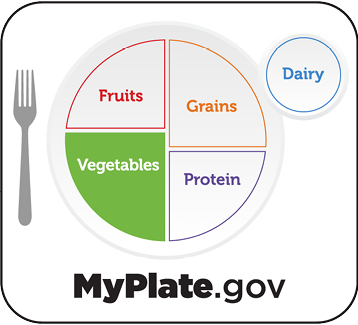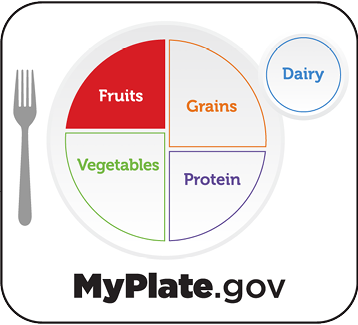Food Shopping for One or Two
If you prepare food for only one or two people, you may have found that keeping food costs down is really hard. But with careful planning and shopping tips, you can serve nutritious, economical meals.
Menu planning is the first step to healthful eating on a budget. Before you shop, check your newspaper for special sales. Also, check your refrigerator, pantry, and freezer for items that need to be used before purchasing new items. You can save money if you plan to use these foods in your meals.
Clip and use coupons only for items you need. Before using a coupon, ask whether you would buy the item if you did not have a coupon. Coupons can be great money-savers, but only if you need the item.
Make a grocery list before you shop. Group similar items together, such as fresh produce, canned foods, frozen foods, breads and cereals, spices, meats, dairy, and non-food items. It will help you streamline your trip through the store, so you don’t have to go back several aisles for an item.
Stick to shopping the perimeter of the store first. Here you will find the produce, meats, and dairy foods. Try to avoid buying too many foods high in added calories, fats, and sugars because these offer little, if any, nutritious value.
Avoid grocery shopping when you are hungry. You are more likely to buy unnecessary items.
Buy only the items on your list. Impulse shopping adds to your grocery bill.
Try to shop when the store will be less crowded.
Read the label. Take a magnifying glass if necessary. Look for the ingredient list. Ingredients are listed in order from largest to smallest amounts. A can that lists “beef, water, tomatoes” is a better buy than one that lists “water, beef, tomatoes” because it contains less water and more beef.
Be sure to check the nutrition facts label. This will provide you with information regarding the calories and nutrients in the food. This information can help you make a healthy choice between two similar products. Note the serving size on the nutrition label so you can compare the same amounts between packages.
Consider no-brand, store-brand, and other generic foods. They usually have the same nutrients as brand-name foods but usually cost less.
Using Unit Pricing
Take advantage of unit pricing if your store offers it. The unit price is the price per pound, ounce, quart, or other standard unit. Most supermarkets have the unit price for foods displayed on the shelves below the foods. You can use the unit price to compare costs between different brands and between different package sizes.
If the unit price is not listed at your supermarket, you can figure out the unit cost. Simply divide the total price of the item by the total number of ounces in the package to come up with the unit price per ounce.
Generally, the larger package will cost the least per serving; however, this may not always be the case, especially with sale items. Consider buying the larger package only if you can use it up, store it for later use, or divide it with a friend.
MyPlate Food Plan
![]()
MyPlate was designed to identify what and how much food an individual should eat to be healthy. The amounts to eat are based on a person’s age, sex, and activity level.
The recommendations for good health include eating a variety of foods in the correct portion sizes.
Smart shopping is a result of smart planning. Plan your weekly menu and meals in advance so you will know what to buy during your next shopping trip.
Best Buys in Each Food Group
Vegetable Group

Vegetables are available fresh, frozen, or canned. Frozen and canned vegetables can be stored for long periods of time and may cost less than fresh options. However, avoid products that are high in added salt or sugars, which are less healthy options when compared to low-sodium or fresh choices.
Store fresh vegetables in your refrigerator, but plan to use them within a week of purchase.
- Cabbage
- Carrots
- Celery
- Corn, cut
- Cucumbers
- Green beans
- Lettuce, pre-packaged salad
- Greens, including mustard, turnip, and collard
- Onions
- Potatoes
- Sauerkraut
- Sweet potatoes, fresh
- Tomatoes
- Spinach, fresh, frozen, or canned
Fruit Group

Fruit may be purchased fresh, canned, frozen, or dried. Choose canned fruits packed in juice over those packed in heavy syrup. Fruits packed in juice are lower in calories and added sugars. When selecting juices, look at the nutrition facts label and choose 100 percent fruit juice.
- Apples
- Applesauce
- Bananas
- Fruit juices, including orange, grapefruit, apple, grape, pineapple, and prune
- Grapefruits
- Oranges
- Pears, fresh
- Tangerines
- Grapes
- Berries, including strawberries, blueberries, and raspberries
- Pineapples
Grain Group

When selecting grains, you should consider purchasing whole-grain products that offer more fiber and other nutrients. Choose cereals that are low in added sugars.
- Bread
- Cornmeal
- Grits
- Farina
- Flour
- Hamburger or hot dog buns
- Pasta
- Popcorn, unpopped
- Ready-to-eat cereals (such as corn, wheat, and bran flakes; puffed rice and oat cereals; and shredded wheat)
- Oatmeal
- Rice
- Saltine crackers
- Tortillas
Protein Group

Consider buying meat that is on sale or buying smaller portions to help lower the cost.
Freezing works well with meat and poultry, so if you have adequate freezer space, consider buying meats and poultry in bulk and storing these in freezer bags for later use.
Choose lean or low-fat meat and poultry products. Eggs, nuts, peanut butter, and dried beans are great nutritious choices that are inexpensive and have long shelf lives.
- Eggs
- Beef, such as chuck roast, round, steak, loin, and sirloin
- Chicken, whole, frozen, or canned
- Fish, fresh, frozen, or canned
- Cured pork, such as picnic and ham
- Dried beans, such as kidney and pinto
- Dried peas, such as black-eyed and split
- Hot dogs
- Pork, such as ham, loin, tenderloin, Boston butt, and sausage
- Ground beef
- Liver
- Peanut butter and other nuts, such as almonds and walnuts
- Turkey, whole or drumstick
Dairy Group

Dry milk is less expensive than liquid milk. Dry milk also will store for long periods of time and works well when using milk to cook.
When buying fresh milk, check the expiration date. If your store offers specials when the milk has a close expiration date, choose it only if you know you will consume the milk before the expiration date. You should not consume milk after the expiration date.
To decide what size container to buy, think about how much milk your family usually uses. Buy a quart instead of a gallon if you do not plan on using it every day. Choose fat-free or low-fat milk, yogurt, and cheese.
- Non-fat dry milk
- Fluid milk
- Pasteurized processed cheese spread and cheese foods
- Natural cheeses, including brick, mozzarella, and cheddar
- Yogurt
Foods that Cost More
- Candy
- Ice cream, cream cheese, yogurt, and specialty cheeses
- One-portion frozen entrees
- Out-of-season fresh fruits and vegetables
- Ready-made or ready-to-bake cookies, cakes, pies, and buns
- Ready-to-eat meals
- Snack foods, such as potato chips, corn chips, and cheese puffs
- Soft drinks and bottled water
- Some cuts of meat, poultry, and fish
- Sugar-coated cereals
Publication 3987 (POD-02-24)
Revised by Qula Madkin, Extension Instructor, Food Science, Nutrition, and Health Promotion, from an earlier edition by Barbara McLaurin, PhD, RD, LD.
The Mississippi State University Extension Service is working to ensure all web content is accessible to all users. If you need assistance accessing any of our content, please email the webteam or call 662-325-2262.







